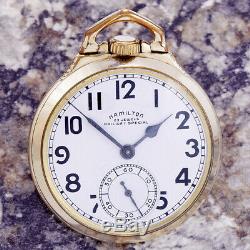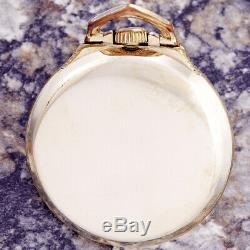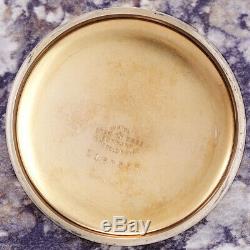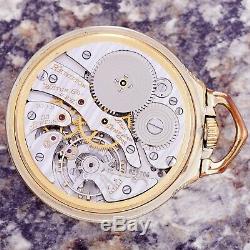
- Home
- Brand
- Antique (6)
- Ball (87)
- Ball Hamilton (25)
- Ball-hamilton (17)
- Elgin (16)
- Elgin Father Time (5)
- Hamilton (4290)
- Hamilton 922-b (3)
- Hamilton 940 (14)
- Hamilton 941 (5)
- Hamilton 992-b (6)
- Hamilton 992b (10)
- Hamilton Gct 4992b (4)
- Hamilton Watch Co (8)
- Hamilton Watch Co. (14)
- Illinois (9)
- Pocket Watch Case (4)
- Wadsworth (6)
- Waltham (8)
- Waltham Vanguard (4)
- ... (1066)
- Case Material
- 10k Gold Filled (112)
- 14k Gold Filled (45)
- Aluminum (67)
- Base Metal (87)
- Base Plate Metal (15)
- Gold (19)
- Gold Fill (15)
- Gold Filled (869)
- Gold Plated (128)
- Nickel (39)
- Silver (29)
- Silver Plated (23)
- Silverode (15)
- Silveroid (15)
- Stainless Steel (95)
- Sterling Silver (12)
- White Gold (14)
- White Gold Filled (11)
- Yellow Gold (64)
- Yellow Gold Filled (15)
- ... (3918)
- Closure
- Ball Hamilton 999-b (2)
- Display Case (5)
- Double Half Hunter (2)
- Double Hunter (35)
- Full Hunter (109)
- Half Hunter (34)
- Hamilton 992 (5)
- Hamilton 992 Elinvar (2)
- Hamilton 992-b (16)
- Hunter (4)
- Hunting (5)
- Hunting Case (2)
- Open Face (2165)
- Open Face Case (4)
- Open Face Display (2)
- Screw Back And Bezel (3)
- Swing Out (2)
- Unknown (2)
- ... (3208)
- Department
- Movement
- 16 Size (4)
- 17 Jewels (2)
- 22 Jewels Gov 4992b (24)
- 950b (3)
- 992b (12)
- Dual Time Zone (2)
- Lever (2)
- Lever Set (4)
- Manual (3)
- Manual Wind (19)
- Manual Winding (3)
- Mechanical (50)
- Mechanical (manual) (1206)
- Mechanical 21 Jewel (2)
- Mechanical Wind (14)
- Navigational (4)
- Openface (3)
- Quartz (8)
- Rail Road Grade (84)
- 993 (2)
- ... (4156)
- Type
Hamilton 950b Railroad Pocket Watch Ca1959 16 Size, 23 Jewel







Hamilton 950B Railroad Pocket Watch U. Hamilton; Mans; Serial# S23706; C.
1959 CASE: The yellow gold-filled, 16-size, plain polished case has an open face. DIAL: This white, melamine, single sunk dial displays Arabic numerals and spade hands. MOVT: This 23-jewel, lever-set movement with lever escapement is nickel with a ¾ plate layout and is signed.
CONDITIONS: C 3 (The case is in very good condition) D 3 (The dial is in very good condition) M 2 (The movement is in perfect condition). Jewels are used as bearings to reduce metal-to-metal contacts which produce friction and wear. They improve the performance and accuracy of the watch and materially prolong its usefulness. The materials used for making watch jewels are diamonds, sapphires, rubies and garnets.The diamond is the hardest but is seldom used except for cap jewels. The sapphire is the next hardness and is the most commonly used because of its fine texture. Garnets are softer than sapphires and rubies. Mandatory for all railroad watches after roughly 1908, this kind of pocket watch was set by opening the crystal and bezel and pulling out the setting-lever (most hunter cases have levers accessible without removing the crystal or bezel), which was generally found at either the 10 or 2 o'clock positions on open-faced watches, and at 5:00 on hunting cased watches.
Once the lever was pulled out, the crown could be turned to set the time. The lever was then pushed back in and the crystal and bezel were closed over the dial again. This method of time setting on pocket watches was preferred by American and Canadian railroads, as lever setting watches make accidental time changes impossible.
After 1908, lever setting was generally required for new watches entering service on American railroads. An escapement is a device in mechanical watches and clocks that transfers energy to the timekeeping element (the "impulse action") and allows the number of its oscillations to be counted (the "locking action"). The impulse action transfers energy to the clock's timekeeping element (usually a pendulum or balance wheel) to replace the energy lost to friction during its cycle and keep the timekeeper oscillating. The escapement is driven by force from a coiled spring or a suspended weight, transmitted through the timepiece's gear train.
Each swing of the pendulum or balance wheel releases a tooth of the escapement's escape wheel gear, allowing the clock's gear train to advance or "escape" by a fixed amount. This regular periodic advancement moves the clock's hands forward at a steady rate. At the same time the tooth gives the timekeeping element a push, before another tooth catches on the escapement's pallet, returning the escapement to its "locked" state.
The sudden stopping of the escapement's tooth is what generates the characteristic "ticking" sound heard in operating mechanical clocks and watches. The metal bar which bears the pivot of wheel and is supported at both ends. The bridge style watch has two or three fingers to hold the wheels in place and together are called a bridge. The term bridge (horologically) is one that is anchored at both ends. Watch adjustment is the process of correcting those errors in the watch that cause variation in time keeping.
These include temperature influences, variation in driving power and position of the watch with respect to mechanism such as pendant up or dial up. Watches with better caliber movements will have been adjusted at the factory for a number of positions. The usual array of positions include a subset of the following positions: 1. Bow down (Not required by Railroad) 5.These positional adjustments are intended to insure that the watch is just as reliable and accurate regardless of the position in which it is stored or used. In addition to positional adjustments, the watch may also be adjusted for Temperature(heat/cold). Temperature affects different elements in different ways. Heat will cause some metals to expand faster than others, and cold may cause some metals to contract more than others. A watch that is adjusted to temperatures will usually include some combination of metals that allow the watch to maintain its proper functionality within a larger range of temperatures than one that is not adjusted for temperature.
Another type of adjustment is Isochronism. As a typical watch spring unwinds the pressure it exerts on the wheels of the movement reduces. This has the potential to create a difference in the operating speed of a fully wound watch versus the same watch in an nearly fully unwound state. Adjustments for isochronism attempt to compensate for this potential by maintaining the same pressure from the spring throughout most of the operating range of the watch. This sort of adjustment was generally seen only on the finest railroad grade watches of the 20th century.
The general rule of thumb with adjustments is that more is better. However, for average every day use, a typical unadjusted watch was perfectly adequate. We consider any reasonable Best Offers - Please submit your best offers!
ABOUT US: Ashland presents the world's best vintage and pre-owned watches and jewelry online. We offer leading brands such as Vacheron Constantin, Rolex, Patek Phillipe, Breitling and many more. We are delighted to present ongoing sales of luxury watches of all brands and price points, shop master watchmakers such as Patek Philippe, Vacheron Constantin, Rolex, Cartier and Audemars Piguet. CUSTOMER SERVICE: Contact: Rick Gilbert Hours: 9 - 5 EST, Monday - Friday Address: Ashland Investments Sarasota Arts & Antique Center 640 South Washington Blvd, Suite 185 Sarasota, FL 34236.
We do not mark merchandise values below value or mark items as "gifts" - US and International government regulations prohibit such behavior. The item "HAMILTON 950B RAILROAD POCKET WATCH CA1959 16 SIZE, 23 JEWEL" is in sale since Sunday, October 27, 2019.
This item is in the category "Jewelry & Watches\Watches, Parts & Accessories\Pocket Watches\Antique". The seller is "eashland_net" and is located in Sarasota, Florida. This item can be shipped worldwide.
- Number of Jewels: 23 Jewels
- Model: Hamilton 950B
- Modified Item: No
- Country/Region of Manufacture: United States
- Style: Railroad Grade
- Escapement Type: Lever
- Pocket Watch Size: 16
- Movement: Mechanical (Hand-winding)
- Year of Manufacture: 1920-Now
- Features: Railroad Watch
- Closure: Open Face
- Brand: Hamilton
- Serial Number: S23706

